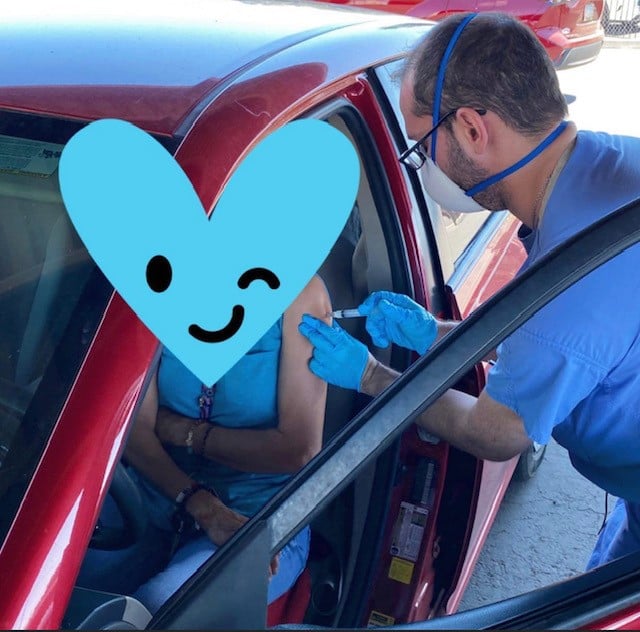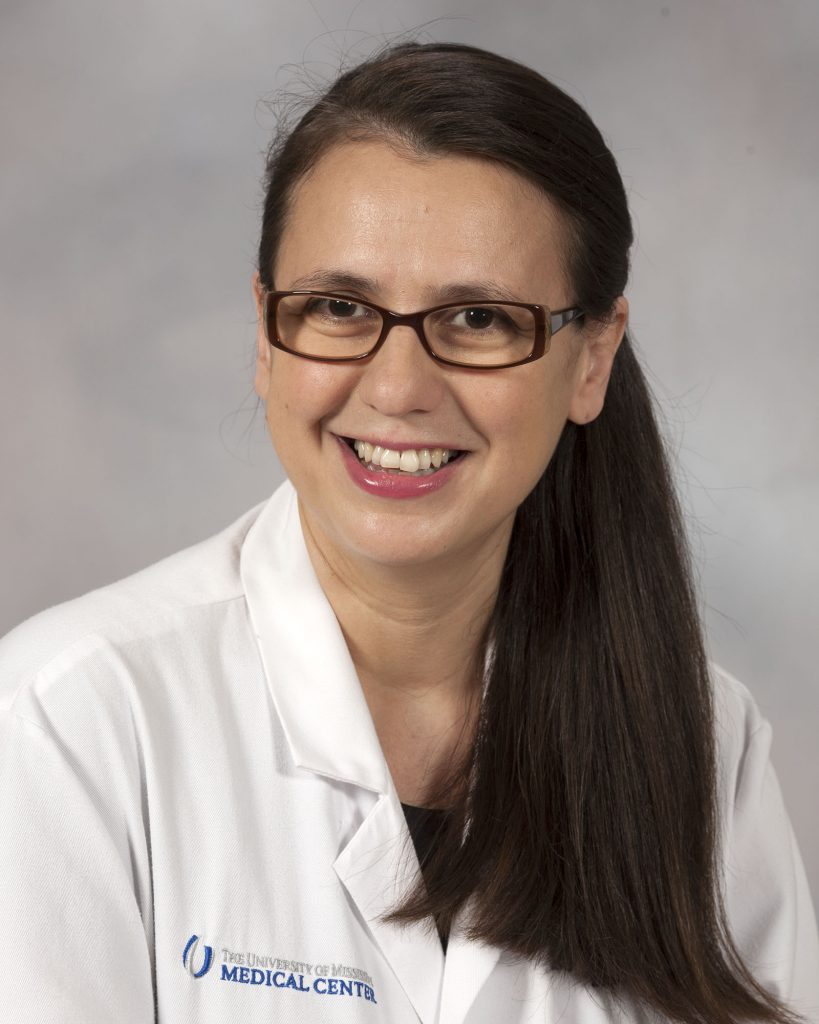
Language and cultural barriers are often a challenge when treating underserved Hispanic populations, which was only exacerbated by the COVID-19 pandemic. However, Ricardo Correa, MD, EdD, and Licy L. Yanes Cardozo, MD, tell Endocrine News how to improve care delivery to these patients, and how the solutions could be simpler than you think.
Last month, a clinical review appeared in the HCA Healthcare Journal of Medicine that examined how the COVID-19 pandemic has affected the Latinx community in the U.S. This was already a vulnerable population, even before the virus started spreading across the country in early 2020. A paper in the November 2019 issue Diabetes Spectrum stated that Hispanics are 66% more likely to develop type 2 diabetes, and once they’re diagnosed, they experience worse outcomes than their non-Hispanic white counterparts.
Of course, that’s not news to most in endocrinology. What those in healthcare are still uncovering, however, is just how much COVID-19 has compounded those worse outcomes among Hispanics. All of the disparities that adversely impacted the Latinx community have only been intensified by the pandemic, from systemic barriers to cultural and language ones. The authors of the HCA Healthcare Journal of Medicine paper write that they hope their work “may serve as a catalyst to address gaps and concerns, reduce healthcare inequities, increase compliance, and improve health and social-related short- and long-term outcomes.”
“It’s very important to understand that with COVID-19, the only thing it did was exacerbate a problem we already knew exists,” says Ricardo Correa, MD, EdD, director for Diversity on GME at the University of Arizona in Phoenix, and corresponding author of the paper. “There were disparities among minorities, including the Latinx community, and the Latinx community is different from other communities because of cultural and language barriers.”
Here we’ll look at some of those barriers, where they stem from, and what steps healthcare and administrative systems can take to address them.
Abuela Knows Best
Correa tells Endocrine News that in Latinx families, the woman is the authority on all things health-related in the household. He says that at the beginning of the pandemic, patients would come to him and tell him that their grandmothers were telling them to do this to prevent COVID or do this to cure COVID. “You have to create a structure to overcome grandma’s recommendations,” he says.
To do that, Correa says that creating education programs was the first focus. He explained to his patients in Spanish the severity of the situation, he appeared on television every day to inform the community, he even created a social media campaign – a Spanish-language version of #ThisIsOurShot called #VacunateYa. But he says he also realized that social media is geared more toward young people, and that the Latinx community is a radio culture.
Correa used these radio addresses to answer questions and dispel concerns that still haunt Hispanic community: How much will the vaccine cost? Will they be looking for documentation? Will ICE or the police be waiting outside the clinic? “We explain that the vaccine is free, and that if anyone asks for documentation, they should leave that place,” he says.
Understand Your Community
Of course, it’s best to explain all this in Spanish, if possible, but the reality is not every healthcare provider speaks Spanish or has a translator on staff, and Correa says that language barrier led to a lot of misinformation among the Latinx community at the beginning of the pandemic. He explains that while there are many Latinx people who do speak English, there is still a large part of the Latinx population who have not learned English. “If they do know some English, it’s basic,” he says, “not enough to understand the complexity of disease.”
Licy L. Yanes Cardozo, MD, is a practicing endocrinologist and physician-scientist at the University of Mississippi Medical Center in Jackson and is involved in several volunteer service activities with the Hispanic population in Mississippi such as Covid-19 vaccine events as well as the attending physician at a Hispanic Clinic at the Jackson Free Clinic in Mississippi. She agrees that the major barrier is language and the lack of providers who speak Spanish, and who share their culture and values in life.
“Ways to overcome these barriers include more resources and support to providers that belong to the Hispanic culture who speak Spanish,” Yanes Cardozo says. “The health system should value more a provider who brings an additional value to the table, the one that cares and is able to communicate with them in their native language. I can see crystal clear when I enter the clinic room and start the visit with a ‘Buenos Dias’ or ‘Hola, como estas?’ that their hearts and souls are immediately open up and the healing process begins.”
Correa points to programs that involve community healthcare workers that have been successful in the English-speaking population. “You have to adapt those to Spanish and then to tailor it to the specific Hispanic community that you serve,” he says. “Because that’s the other problem: when you say Latinx, you are talking about a big spectrum of Latinx.”

“Latinx patients do their best to follow medical advice in a system that is extremely challenging when they get ill…Frequently they do not have family in the U.S., and they heavily rely on their community network for help. Their high work ethic has remained the same throughout and after the pandemic; they are eager to work and provide for their families in the US and abroad. As a physician, I am always touched by their resilience and their positive attitude despite the challenges that they face in their lives.” — Licy L. Yanes Cardozo, MD, endocrinologist/physician-scientist, University of Mississippi Medical Center, Jackson, Miss.
In any communications class, the first thing they teach is “Know your audience.” The same rule applies here. Mexicans differ from Puerto Ricans who differ from Argentinians and so on. There are similarities, of course, but cultures and cuisines vary and there are many factors that need to be considered when providing healthcare. “Understand your community so you can start programs to help that community,” Correa says. “It’s not something national that will come and help solve the problem.”
A Need for Paid Sick Leave
A national prescription that could have an enormous impact and help solve some of the problem is paid sick leave, something that many other countries in the world have adopted. Many in the Latinx community work in what the U.S. deemed “essential jobs” – janitors, bus drivers, farm workers. People whom everyone else depends on every day. And because Hispanic culture is familial, 10 people may live in a small apartment or even a room. “How can you quarantine in a room where you live with 10 people?” Correa says.
The authors of the HCA Healthcare paper write: “[P]eople in the Latinx community also admitted that the decision to not get tested for COVID-19 was influenced by their inability to work if they tested positive. There is no paid sick leave in the jobs that many Latinx people work.” But even then, Correa says, a positive test didn’t bar some from going to work. “Because if you don’t work that day,” he says, “you don’t have money to bring to the house.”

“We are trying to consider immigration as part of a social determinant of health. Taking care of this population and talking to them in their own language is important so they can trust the system again. And we can prevent the spread of other infectious diseases that may come again. We can prevent bad outcomes of chronic disease.” — Ricardo Correa, MD, EdD, director for Diversity on GME, University of Arizona, Phoenix, Ariz.
For Yanes Cardozo, she sees firsthand the struggles, and the determination, of the Latinx community – even through this pandemic. “Latinx patients do their best to follow medical advice in a system that is extremely challenging when they get ill,” she says. “Frequently they do not have family in the U.S., and they heavily rely on their community network for help. Their high work ethic has remained the same throughout and after the pandemic; they are eager to work and provide for their families in the US and abroad. As a physician, I am always touched by their resilience and their positive attitude despite the challenges that they face in their lives.”
“I think that the best thing that the U.S. can adopt — and not just for the Latinx community — is paid sick days,” Correa says. “That’s a public health measure. In every part of the world, they have that. You should be allowed to have paid sick days.”
Correa says they were able to offer help in his community through a charity clinic, donating money to those in need, but because they had an altruistic donor step in. “It should not be like, ‘Oh, because somebody has a donor that now is the way,’” he says. “No, this should be the government assuming responsibility to prevent public health problems.”
Know Your Audience
By the time this issue hits mailboxes, Hispanic Heritage Month will be winding down. This is a population that represents almost 20% of the U.S., the largest minority group in the country, many of whom are frontline and essential workers. This is also a group who suffer from health disparities, including higher rates of endocrine conditions like diabetes and obesity more than any other ethnicity.
And like Black and Native Americans, the healthcare system has failed them many times. Abuse in the clinic. Abuse in trials. But unlike those populations, Hispanics have the added risk of being reported to the authorities if they don’t have documentation. “We are trying to consider immigration as part of a social determinant of health,” Correa says. “Taking care of this population and talking to them in their own language is important so they can trust the system again. And we can prevent the spread of other infectious diseases that may come again. We can prevent bad outcomes of chronic disease.”
Yanes Cardozo says that in her experience, trust in physicians is intact among the Latinx community. “But the amount of misinformation that they get is huge and they do not have many providers that can communicate with them in Spanish to clarify that misinformation,” she says.
And because the Latinx community is so familial, it’s important to involve the family in the management of any condition, Correa says. According to Correa, for Hispanics, women are seen as the caregivers, while men are generally seen as the providers. “I see that in my management of diabetes,” he says. “Usually when there’s a male patient, I have to bring the wife in and explain everything to her.”
For Correa, at the end of the day, it’s about making the effort to understand the community. Know your audience. “If you have a Latinx population in your area,” he says, “understand the culture of that that population that you have in your area that is probably different from others, especially if you have worked in other areas that might have a vastly different Latinx community.”
–Bagley is the senior editor of Endocrine News. He interviewed Olympic gold medalist Gail Devers and endocrinologist Eve D. Bloomgarden, MD, in the September issue for the article, “Clearing Hurdles,” that detailed the importance of patients being their own healthcare champions.

